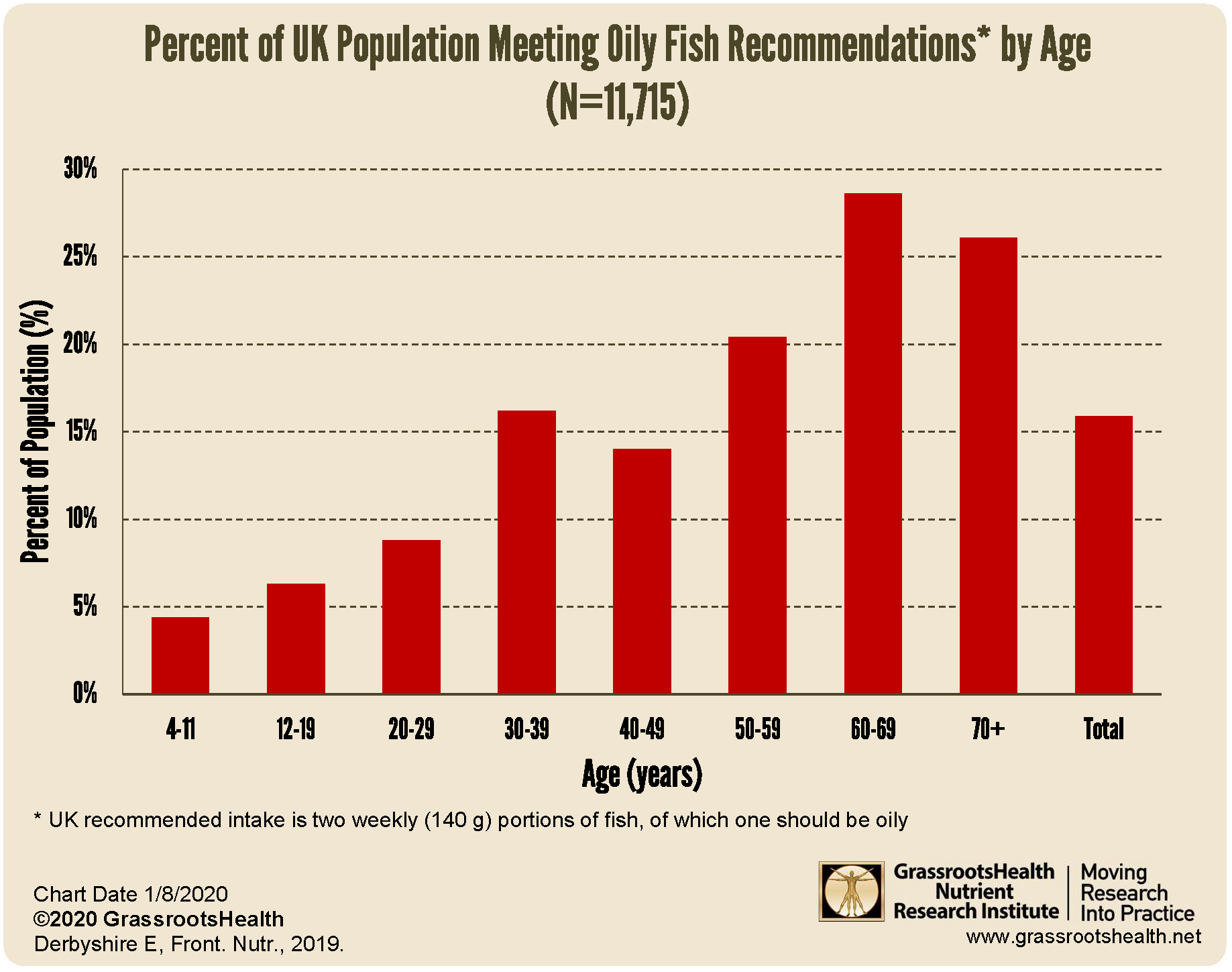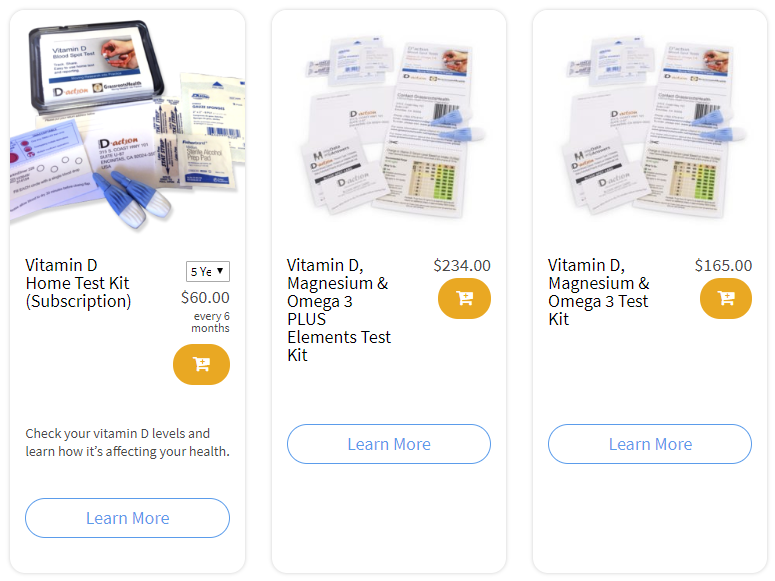Published on January 13, 2020
The American Heart Association (AHA) recommends 1-2 servings of seafood per week, however, that recommendation may not be enough to reach an Omega-3 Index of at least 8%. A score of 8% or greater is associated with lower risk of coronary heart disease mortality, acute coronary syndrome, and death from any cause, whereas a score of less than 4% is associated with higher risk. The Omega-3 Index measures the amount of omega-3 fatty acids (EPA and DHA) in red blood cell (RBC). It is a long-term and stable marker of omega-3 status, and it reflects tissue levels of EPA+DHA.
Most Do Not Achieve Omega-3 Index of 8% with Recommended Intake
Despite these recommendations, a recent GrassrootsHealth publication reported that most of those following AHA guidelines with 1-2 servings of fatty fish per week did not achieve an Omega-3 Index of at least 8% without the addition of an omega-3 supplement. Therefore, people following AHA guidelines without any additional omega-3 supplementation likely did not receive the benefits of a favorable Omega-3 Index. (Our next post will take a closer look at Omega-3 Index levels achieved by number of servings of fatty fish among participants not taking any omega-3 supplements).
The Effects of Age and Sex on Fatty Fish Intake
A cross-sectional study published last fall measured oily fish intake in a population of 11,715 participants over the age of 4 in the UK, and grouped the results based on age and sex. Public health recommendations in the UK for fish consumption are 2 servings per week, with one of those servings as oily fish rich in omega 3 fatty acids. One serving per week equates to an average of about 20 grams per day. Only 25.2% of survey participants were oily fish consumers, and of these, only 25.5% consumed the recommended amount of an average of at least 20 grams per day. Across all groups, the average oily fish intake was just 12.1 grams per day, or slightly more than half of the recommended amount.
Consumption of oily fish tended to increase with age except for ages 40-49 for both male and female groups. Despite a generally positive relationship between age and consumption of oily fish, the only groups to reach the recommended average minimum of 20 grams per day of oily fish consumption were men in the 60-69 age group and women in the 70+ group.
These results are particularly relevant for women of child-bearing age and pregnant mothers as they are at risk for omega-3 fatty acid deficiency, which is associated with an increased risk of gestational diabetes, pre-term birth, and postpartum depression, among others.
Since most participants in this survey are consuming less than 1 serving per week of fatty fish, they most likely have not achieved an Omega-3 Index of at least 8% if they are not also taking an omega 3 supplement, based on the data from the GrassrootsHealth study.
Can Omega-3 Status Change?
Fortunately, omega-3 status can be improved with increased intake of oily fish and/or supplemental sources of EPA and DHA. However, similar to vitamin D, there can be a significant variation in response of the Omega-3 Index to omega-3 fatty acid intake, which makes testing the Omega-3 Index essential. In addition to assessing intake to resulting index levels, your participation will help to also quantify the impact of both intake and levels to specific health outcomes.
Effectively Measure Change with the Omega-3 Index Blood Spot Test
Is your dietary and supplemental intake of omega-3s enough to ensure an Omega-3 Index of at least 8%? Make sure you know your vitamin D level, and take steps to keep it within a target of 40-60 ng/ml or 100-150 nmol/L! Through GrassrootsHealth Nutrient Research Institute, you can also test your essential elements magnesium, copper, zinc and selenium, toxins such as lead, mercury and cadmium, as well as your omega-3 levels, inflammation levels and thyroid stimulating hormone (TSH) level. Find out your levels today! Log on to the test selection page (click the link below) to get your tests and see for yourself if your levels can be improved.
Make sure you track your results before and after, about every 6 months!
Click Here to Access the Test Page
How can I track my nutrient intake and levels over time?
To help you track your supplement use and nutrient levels, GrassrootsHealth has created an online tracking system called myData-myAnswers. For each specific supplement, you can track what days you take it, how much, and many other details. This will help you know your true supplemental intake and what patterns of use work for you to reach and maintain optimum nutrient levels. Check it out today!








